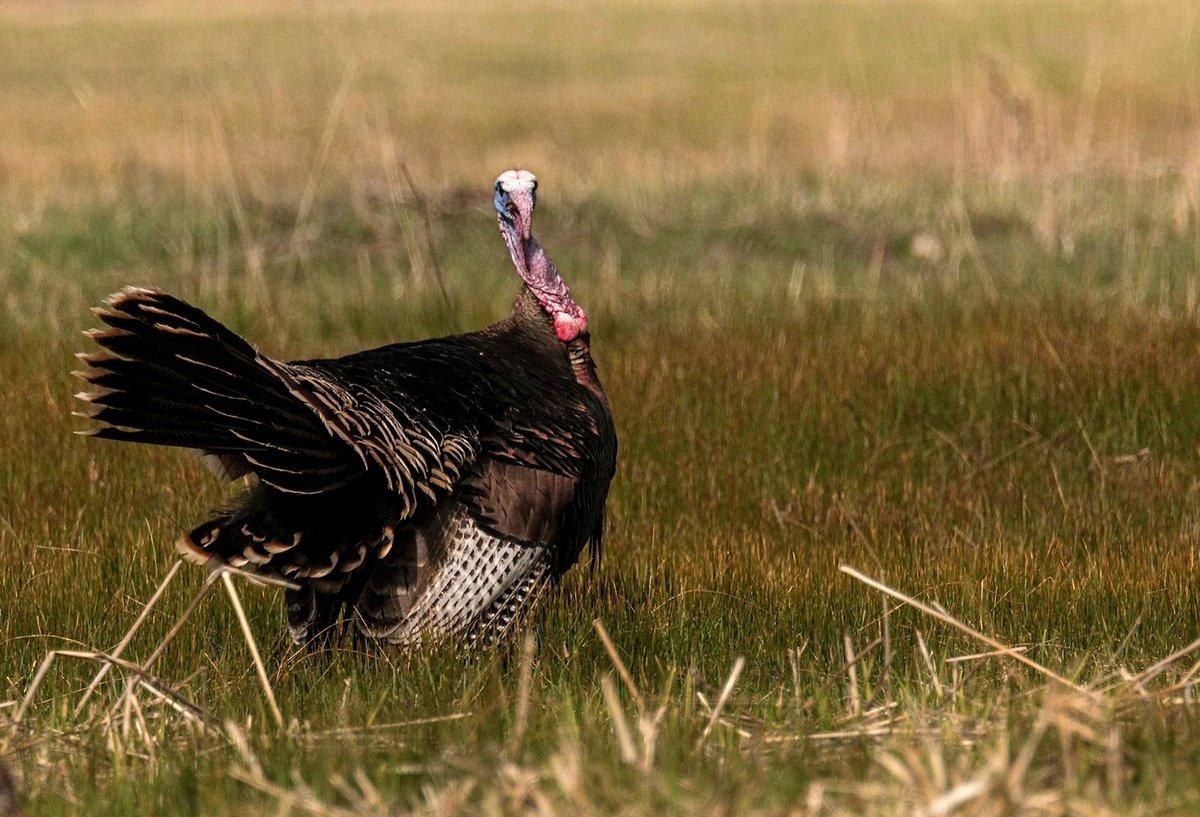An old tom that gobbles and struts in the open is tough, but you can still make him come to you. Here's how
One of the toughest turkeys is an old longbeard that spends a good portion of his day strutting out in the middle of a green field where he can see a country mile. As he spins and displays in his gaudy splendor, he's telling hens in the area, “I'm the man, girls, come to me, I'm not budging.”
A field turkey is a tough bird indeed, but he can be tricked.
Blind Luck
A tom that gobbles hard on the roost, flies down, and walks out into the middle of a big field day after day is maddening to hunt. Sometimes a really ornery gobbler will sail 100 yards or so off his roost limb and land smack in the middle of a food plot or pasture. Double maddening.
“I got tired of setting up on the edge of a field and changing locations and trying to kill a gobbler like that,” says Dan James, one of the best Virginia turkey hunters I know. “You can go round and round with a field bird and waste your whole season.”
Nowadays, James goes to a field at midday where he knows a turkey loves to strut in the morning. After glassing that the coast is clear, he pops up a blind near a field corner or even smack in the middle where he's seen a strutter.
“While a new blind will spook every deer that sees it, turkeys couldn't care less and will strut right up to it,” notes James, who says to get up super early the next morning and use cover of darkness to slip into the blind. “Set a hen decoy and a jake 20 yards from the blind and in the direction of where the turkey roosts. When he gobbles at first light, sit tight and stay quiet. If you must call, make a few soft yelps.”
James says that when the gobbler files down, works to the field and sees your decoys, he'll sometimes run right to you. Or maybe not. “A field turkey is a devil, you never know what he'll do,” he says. “But hunt the blind enough mornings and don't call too much, and there's a good chance you'll eventually get him.”
(Don't Miss: The Box Call Is the Deadliest Turkey Yelper You're Not Using)
Midday Tactics
When you get skunked early, leave that bird for tomorrow and start roaming and looking for gobblers in nearby fields and plots, especially on rainy days when turkeys flock to fields.
Walk slowly in the woods and glass through the trees and out into open fields. If you don't see a gobbler, try to raise one that might be strutting in a dip in a field or in a nearby fringe of woods. Blow a crow call or yelp and cutt on a box or aluminum pot. Really hit that call to make a turkey shock gobble in midmorning.
Say you spot a strutter or raise a gobble. Sneak toward the bird and look for a calling setup. A corner or point that juts out into a field is a good spot. If there's an old roadbed that dumps into a field nearby, you might set up and call there. I've killed quite a few toms that strutted out of fields and into a two-track back in the woods.
(Don't Miss: How to Turkey Hunt the Worst Weather Possible)
Calling Tips
When you see a turkey strutting 150 yards away in a field or plot, your urge is to yelp long and hard. But as a rule, the more you call, the more Old Sharp Spurs will stand out there and strut. It's best just to let a turkey know you're there. Toss out some clucks, yelps, and purrs and the occasional excited cutting. Give a tom time, maybe an hour or more, to commit to the edge where you're set up.
Some days you'll run across a field gobbler tending two or more hens. If your soft calls won't work, try cranking up to louder, aggressive yelps and cutts in hopes of riling the lead hen and pulling her your way. This is a long-shot, but it works once in a while. If the gobbler struts in behind his hens, press the trigger and enjoy the flop. You just fooled one of the toughest turkeys of spring.








